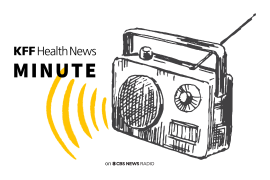Could Decades-Old UV Light Technology Be Deployed In Stores, Restaurants To Zap Virus?
Ultraviolet light mangles the genetic material in pathogens preventing them from reproducing. Installing commercial-grade lights would be expensive for stores, but it could help keep them sanitized even beyond the current pandemic. In other news: Frontier will test consumers' temperatures, summer might not offer relief from virus, what you need to know about the mutations, and more.
The New York Times:
Scientists Consider Indoor Ultraviolet Light To Zap Coronavirus In The Air
As society tries to rebound from the coronavirus pandemic, some scientists hope a decades-old technology could zap pathogens out of the air in stores, restaurants and classrooms, potentially playing a key role in containing further spread of the infection. It has the ungainly name of upper-room ultraviolet germicidal irradiation, and it is something like bringing the power of sunlight indoors. “We have struggled in the past to see this highly effective, very safe technology fully implemented for airborne infections,” said Dr. Edward A. Nardell, a professor of global health and social medicine at Harvard Medical School. “We’ve done the studies. We know it works.” (Chang, 5/7)
The Washington Post:
Frontier Just Became The First U.S. Airline To Require Temperature Screening
Frontier Airlines said Thursday it will require passengers to have their temperatures taken before boarding flights, starting June 1, in an effort to make traveling safer during the coronavirus pandemic. Anyone with a temperature of 100.4 or higher will not be allowed to fly, the budget carrier said. While the move is a first for U.S. carriers, according to the airline, Air Canada announced a similar measure earlier this week. (Sampson, 5/7)
The New York Times:
Summer Is Coming, But The Virus Won’t Be Going
“Everybody hopes for seasonality” when it comes to the coronavirus pandemic, Peter Juni of the University of Toronto acknowledged. Maybe, just maybe, the summer will diminish the spread of Covid-19. But a new study, by Dr. Juni, an epidemiologist, and his colleagues in Canada and Switzerland, offers very little encouragement for warm-weather worshipers. In countries around the world, his research found, variations in heat and humidity had little to no effect on the spread of the pandemic. Differences in how the disease spread were instead strongly associated with public health measures like social distancing and school closures. (Gorman, 5/8)
ABC News:
Yes, COVID-19 Is Mutating, Here's What You Need To Know
As the virus that causes COVID-19 traveled out of China and proliferated across the globe, it developed small mutations that accumulated into distinct versions of the virus. Scientists can now tell these versions apart by peering into the viral genome. For example, here in the United States, there is the "West Coast" version of the virus that came directly from Asia, and a slightly different "East Coast" version which traveled through Europe. But is one version of coronavirus more dangerous than the other? And should we be afraid of these new mutations? The short answer according to virologists, is no. (Baldwin and Salzman, 5/7)
The Wall Street Journal:
Leading Cause Of Death In U.S.? Hint: It Isn’t Covid-19
Has Covid-19 become the leading cause of death in the U.S.? At its worst, the new coronavirus has killed 2,584 Americans in 24 hours. Daily totals aren’t available for heart disease—generally considered the country’s leading killer—but some reports have compared the average, currently around 1,900 a day, to Covid-19’s high. That makes the virus look deadlier. But so far this year, three times more people have died of heart ailments. (McGinty, 5/8)






